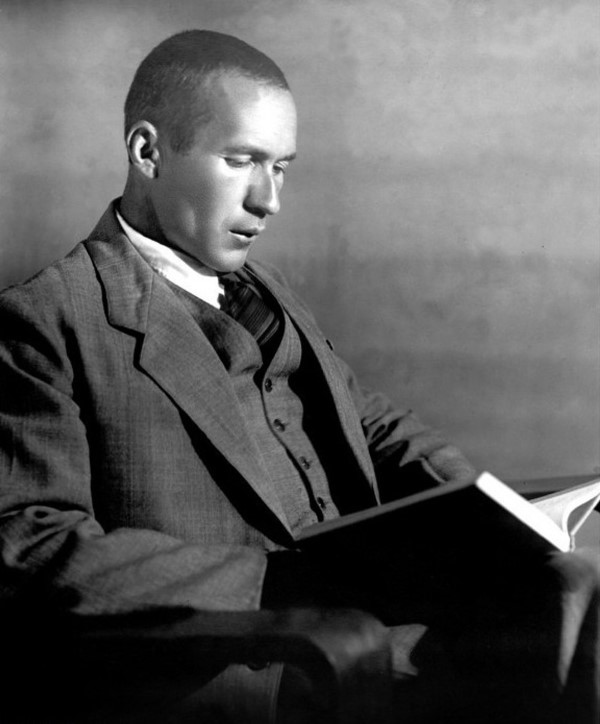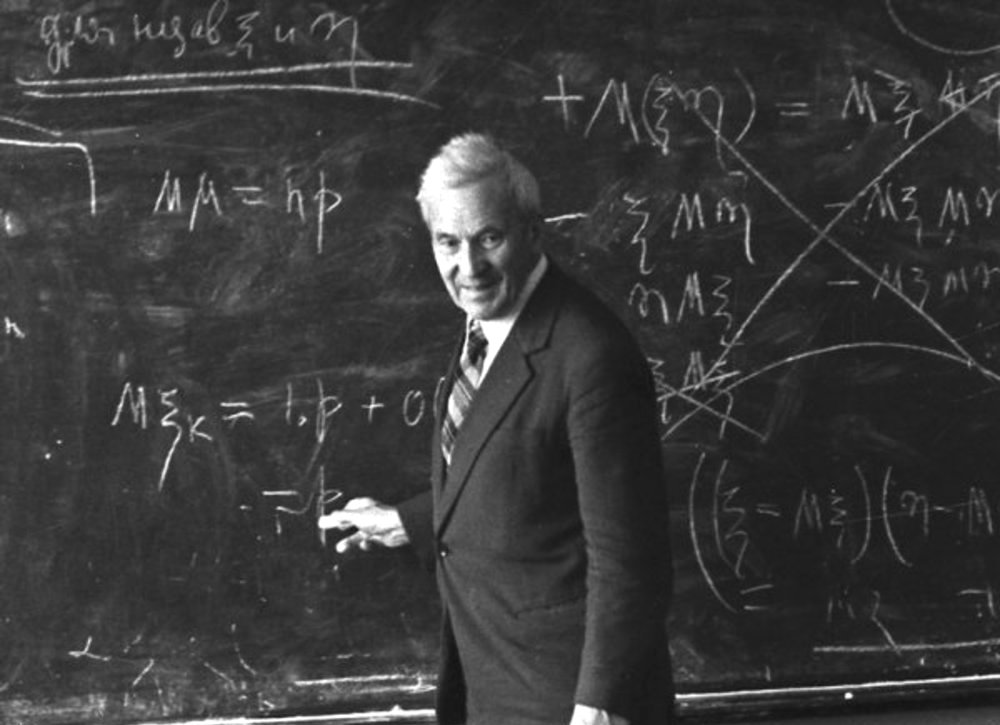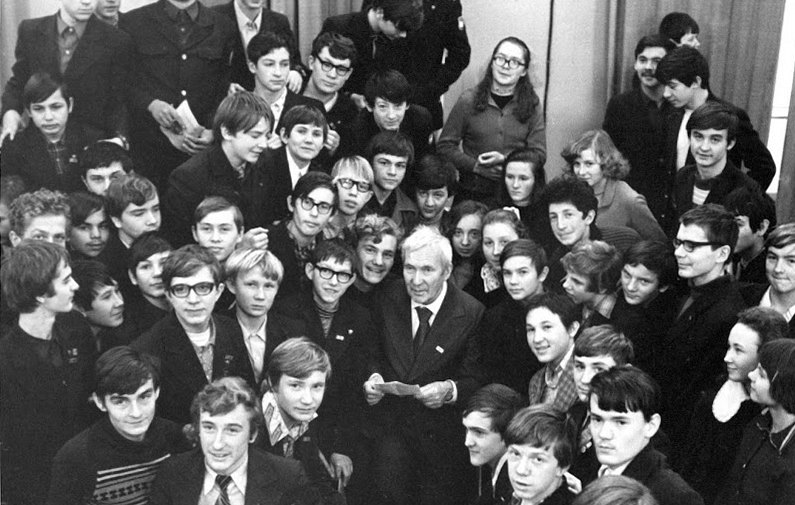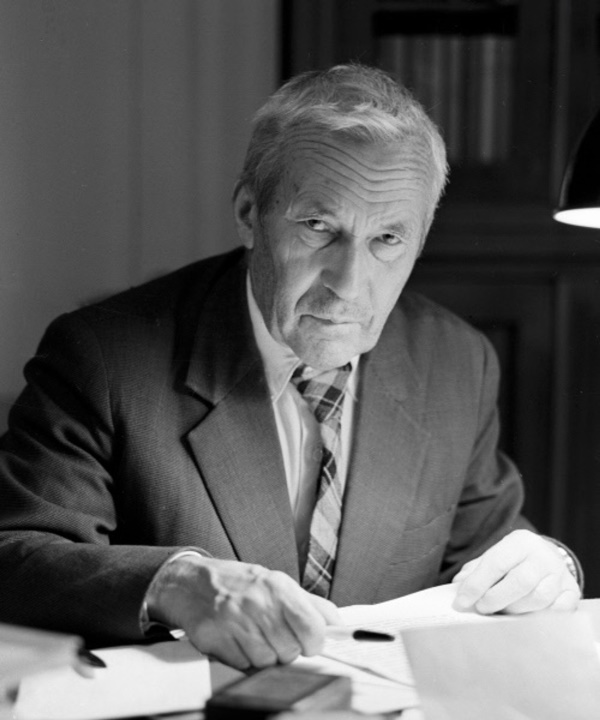
Proud of Our People! Andrey Kolmogorov, the greatest mathematician of the XX century
/ Главная / Russkiy Mir Foundation / Publications / Proud of Our People! Andrey Kolmogorov, the greatest mathematician of the XX centuryProud of Our People! Andrey Kolmogorov, the greatest mathematician of the XX century
Anna Efremova
April, 25 is the 120th anniversary of the birth of Andrey Kolmogorov, a mathematical genius, the founder of the theory of probability, the author of discoveries in at least 20 other areas of mathematics. In addition, he left behind works on physics, turbulence, philosophy, and even literary criticism. No wonder contemporaries called him a "Renaissance man."
Andrey Kolmogorov's upbringing was challenging, as he lost his mother at birth and had little relationship with his father, who died during the Denikin offensive. He was raised by his mother's sister, Vera Kolmogorova, who was a talented teacher and ran a school for children in his father's estate. Andrey's grandfather was also involved in education as a patron of vocational schools.

Photo: Yarkiepedia
Teachers did not have time to teach
As a child, Andrey showed his talent in mathematics, even publishing his own mathematical problems in his aunt's handwritten children's magazine, "Spring Swallows." One of his problems was to determine the number of ways to sew on a button with four holes.
When he was seven, the boy enrolled in a private Moscow gymnasium, one of the few that allowed boys and girls to study together. The school was known for its progressive approach to education, with university-level teachers who were actively engaged in scientific research, and students were encouraged to explore science by writing and defending scientific reports. However, as his former classmates recalled, the teachers were often too busy to instruct him, so he relied on his exceptional mathematical abilities to excel in his studies. In fact, he went beyond the curriculum and taught himself advanced math by using The Brockhaus and Efron Encyclopedic Dictionary.
Besides his love for mathematics, he was also fascinated by history. At the age of 17, Andrey Kolmogorov wrote a research paper on land relations in the Novgorod region, based on the scribe books from the 15th to 16th centuries. Nevertheless, he ultimately chose mathematics. As he later explained to his students, "I opted for a scientific field where a single proof suffices for a final conclusion, rather than several, as in historical science."
Read also: Proud of Our People! Anton Makarenko, Educator of Homeless Children
Professor at 28, Academician at 35
Kolmogorov began his education at both Moscow University's mathematics department and the Mendeleev Institute of Chemical Technology's mathematics department in 1920, but he soon chose to attend MSU exclusively. After only a month of study, he passed all the first-year exams and was admitted to the second year of the course. More importantly, he was entitled to receive 16 kilos of bread and a kilo of butter each month, which provided him with financial security.
Kolmogorov gained worldwide recognition at the age of 19 during his studies at the university. Mathematician and writer Vladimir Gubailovsky describes how Kolmogorov's discovery of a summable function whose Fourier series diverges almost everywhere is a remarkable example of a borderline case that helped to delineate the boundaries of mathematical concepts and their applications. Fourier himself believed that such a function was impossible, but Kolmogorov proved otherwise, narrowing down the set of functions that could be decomposed into Fourier series.

Photo: Yarkiepedia
After graduating from university, Andrey Kolmogorov starts working on probability theory. He has created a system of axiomatic justification of this theory in the 1930s. And the proof of the amplified law of large numbers (“Kolmogorov's theorem”) would become one of the most famous achievements of the scientist, but by no means the only one. During World War II, the mathematician, using his research on probability theory, defined the most profitable dispersion of projectiles when shooting, the degree of deviation from the place of probable hit for maximum accuracy in hitting the target. Soviet mathematicians, on the instructions of the Red Army's Main Artillery Directorate, conducted sophisticated work on ballistics and mechanics.
Andrey Kolmogorov's immense talent in mathematics and physics is evident in his research spanning over 20 different fields, where he achieved remarkable results. These fields include mathematical logic, topology, information theory, automata theory, approximation theory, dynamical systems, classical mechanics, and turbulence theory, among others. Kolmogorov's ability to navigate seamlessly through diverse areas of mathematics was awe-inspiring to many. According to Vladimir Gubailovsky, "Kolmogorov saw mathematics as a whole and was one of the last scientists to have such a vision."
Therefore, Kolmogorov's academic accomplishments are nothing short of impressive, becoming a professor at the young age of 28 and an academician at 35. However, his contributions extend beyond his individual successes. He established one of the world's largest and most influential mathematical schools, making a lasting impact on the field.
Author of school textbooks and founder of the mathematical school
As early as 1935 Andrey Kolmogorov and his colleagues organized the first mathematical Olympiad for children in Moscow. And after the war in the USSR began to organize in addition to mathematical competitions, Olympiads in physics for schoolchildren - the reviving country needed thousands of scientific personnel.
After Yuri Gagarin's historic spaceflight, American President John F. Kennedy famously said, "We lost to the Soviet Union at the school desk." In the mid-1960s, the Soviet Ministry of Education recognized that the school mathematics program was outdated and needed reform. Andrey Kolmogorov, as an academician, played a significant role in these reforms. He led the development of new algebra and geometry textbooks for secondary schools. However, the results of the reform were mixed. The textbooks were written by scientists who did not consider the level of knowledge of both schoolchildren and teachers. As a result, many people found the new textbooks overly complicated, and the number of students who could not handle the problems in the school program increased significantly.

Photo: Yarkiepedia
Kolmogorov's successful experiment was the establishment of specialized mathematical schools. In 1963, the USSR Council of Ministers founded four specialized boarding schools for physics and mathematics in Moscow, Kiev, Novosibirsk, and Leningrad. Academician Kolmogorov was one of the initiators of the Moscow mathematical boarding school for gifted children. In August 1963, he held a summer math school in the village of Krasnovidovo for the winners and runners-up of the Russian Mathematical Olympiad, along with his students and graduate students. Kolmogorov conducted lectures and classes, and they also went hiking in the surrounding woods during their free time. He established the necessary proportion of classes which included poetry, mathematics, physical education, and walks to create a conducive environment for talent development.
The history of the ancient world, lectures in fine arts and music, and ancient Russian architecture were taught in Kolmogorov's boarding school, the curriculum for which was developed by the greatest mathematician himself. The main subject, the math, was taught there according to the university program.

Photo: Yarkiepedia
It is remarkable that Kolmogorov's legacy in education still persists in modern Russia. The Kolmogorov school remains a leading institution for gifted students in mathematics and sciences, and continues to produce exceptional graduates who go on to make significant contributions to their fields. In addition, many other specialized mathematics schools in Russia have followed in the footsteps of the Kolmogorov boarding school, adopting its system of education and curriculum. Overall, Andrey Kolmogorov's contributions to mathematics, education, and the development of scientific talent in the Soviet Union and beyond were truly remarkable. His legacy continues to inspire and influence generations of mathematicians and scientists around the world.
Andrey Kolmogorov's legacy is immense and diverse, spanning across mathematics, physics, probability theory, turbulence, and more. He was a brilliant scientist, a gifted teacher, and an innovator who made a significant impact in various fields. His contributions to the Soviet Union's education system and the creation of specialized mathematical schools paved the way for the development of scientific talent in the country. His work in verse studies and complexity theory helped shape modern mathematics and artificial intelligence. Kolmogorov's diary plan “to become a great man in 40 years” not only came true, but he also left a lasting impact on the world of science and education.
New publications

 Mikhail Kalatozov, a director who transformed the world of cinematography in many ways, was born 120 years ago. He was a Soviet film official and a propagandist. Above all, he was capable of producing movies that struck viewers with their power and poetic language.
Mikhail Kalatozov, a director who transformed the world of cinematography in many ways, was born 120 years ago. He was a Soviet film official and a propagandist. Above all, he was capable of producing movies that struck viewers with their power and poetic language.  Ukrainian authorities have launched a persecution campaign against the canonical Ukrainian Orthodox Church (UOC), the biggest one in the country's modern history. Over the past year, state sanctions were imposed on clergy representatives, searches were conducted in churches, clergymen were arrested, criminal cases were initiated, the activity of the UOC was banned in various regions of the country, and monasteries and churches were seized.
Ukrainian authorities have launched a persecution campaign against the canonical Ukrainian Orthodox Church (UOC), the biggest one in the country's modern history. Over the past year, state sanctions were imposed on clergy representatives, searches were conducted in churches, clergymen were arrested, criminal cases were initiated, the activity of the UOC was banned in various regions of the country, and monasteries and churches were seized.  When Nektary Kotlyaroff, a fourth-generation Russian Australian and founder of the Russian Orthodox Choir in Sydney, first visited Russia, the first person he spoke to was a cab driver at the airport. Having heard that Nektariy's ancestors left Russia more than 100 years ago, the driver was astonished, "How come you haven't forgotten the Russian language?" Nektary Kotlyaroff repeated his answer in an interview with the Russkiy Mir. His affinity to the Orthodox Church (many of his ancestors and relatives were priests) and the traditions of a large Russian family brought from Russia helped him to preserve the Russian language.
When Nektary Kotlyaroff, a fourth-generation Russian Australian and founder of the Russian Orthodox Choir in Sydney, first visited Russia, the first person he spoke to was a cab driver at the airport. Having heard that Nektariy's ancestors left Russia more than 100 years ago, the driver was astonished, "How come you haven't forgotten the Russian language?" Nektary Kotlyaroff repeated his answer in an interview with the Russkiy Mir. His affinity to the Orthodox Church (many of his ancestors and relatives were priests) and the traditions of a large Russian family brought from Russia helped him to preserve the Russian language.

 The leaders of the Friends of the Great Russia cultural association (Amici Della Grande Russia) in Italy believe that the Western policy of abolishing Russian culture in Europe has finally failed. Furthermore, it was doomed to failure from the beginning.
The leaders of the Friends of the Great Russia cultural association (Amici Della Grande Russia) in Italy believe that the Western policy of abolishing Russian culture in Europe has finally failed. Furthermore, it was doomed to failure from the beginning.  Name of Vladimir Nemirovich-Danchenko is inscribed in the history of Russian theater along with Konstantin Stanislavski, the other founding father of the Moscow Art Theater. Nevertheless, Mr. Nemirovich-Danchenko was a renowned writer, playwright, and theater teacher even before their famous meeting in the Slavic Bazaar restaurant. Furthermore, it was Mr. Nemirovich-Danchenko who came up with the idea of establishing a new "people's" theater believing that the theater could become a "department of public education."
Name of Vladimir Nemirovich-Danchenko is inscribed in the history of Russian theater along with Konstantin Stanislavski, the other founding father of the Moscow Art Theater. Nevertheless, Mr. Nemirovich-Danchenko was a renowned writer, playwright, and theater teacher even before their famous meeting in the Slavic Bazaar restaurant. Furthermore, it was Mr. Nemirovich-Danchenko who came up with the idea of establishing a new "people's" theater believing that the theater could become a "department of public education."  "Russia is a thing of which the intellect cannot conceive..." by Fyodor Tyutchev are famous among Russians at least. December marks the 220th anniversary of the poet's birth. Yet, he never considered poetry to be his life's mission and was preoccupied with matters of a global scale. Mr.Tyutchev fought his war focusing on relations between Russia and the West, the origins of mutual misunderstanding, and the origins of Russophobia. When you read his works today, it feels as though he saw things coming in a crystal ball...
"Russia is a thing of which the intellect cannot conceive..." by Fyodor Tyutchev are famous among Russians at least. December marks the 220th anniversary of the poet's birth. Yet, he never considered poetry to be his life's mission and was preoccupied with matters of a global scale. Mr.Tyutchev fought his war focusing on relations between Russia and the West, the origins of mutual misunderstanding, and the origins of Russophobia. When you read his works today, it feels as though he saw things coming in a crystal ball...